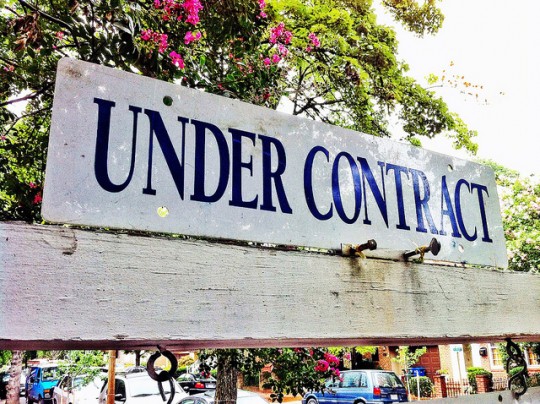Sales of previously owned homes were virtually unchanged in March, according to new data from the National Association of Realtors. Existing home sales – which include single-family homes, townhomes, condominiums, and co-ops – were 0.2 percent below February’s rate and 7.5 percent below year-before levels. Lawrence Yun, NAR’s chief economist, said that sales activity is slow by historical standards. There should really be stronger levels of home sales given our population growth, Yun said. Still, Yun believes there will be improvement in the months ahead, due to continued gains in the job market and sales of homes that were delayed over the winter because of harsh weather. Regionally, home sales were up in the Northeast and Midwest but fell in the South and West. Housing inventory – which drives price increases when low – improved in March, with unsold inventory up 3.1 percent from a year ago. There were 1.99 million previously owned homes available for sale at the end of the month. At the current sales rate, that represents a 5.2-month supply, up from a 4.7-month supply one year ago. Also, the median existing-home sales price for all housing types was $198,500. More here.
Tag Archive for existing home sales
Pending Home Sales Flat But Stabilizing
Pending home sales are a forward-looking indicator of future existing-home sales based on the number of contracts to buy homes that are signed during the month. In February, contract signings slipped 0.8 percent, according to the National Association of Realtors. Lawrence Yun, NAR’s chief economist, said pending home sales have been little changed over the past three months, which indicates the market is stabilizing. Buyer traffic has increased modestly as the spring selling season begins and there is an expectation that some transactions that were delayed due to winter weather will now close. According to Yun, this suggests that the home sales slowdown may now be behind us. Regionally, the report was a mixed bag. Pending sales were up in the Midwest and West, while falling in the Northeast and South. Overall, contract signings are 10.5 percent below year-before levels. More here.
Pending Home Sales Unchanged In January
The National Association of Realtors’ Pending Home Sales Index is a forward-looking indicator of future existing-home sales that measures the number of contract signings each month. In January, the Index was virtually unchanged, rising 0.1 percent above December’s upwardly revised estimate. Lawrence Yun, NAR’s chief economist, said ongoing disruptive weather patterns across much of the U.S. have inhibited home shopping. Yun believes that weather, combined with low inventory and declining affordability levels, have slowed home sales. But despite slowing this winter, the sales pace is expected to pick up after the first quarter and total existing-home sales are projected to reach over 5 million by the end of the year. Regionally, pending sales rose in both the Northeast and South, while dropping in the West and Midwest. Yun says new home construction may be the key to alleviating inventory issues and taming price growth. The median existing-home price is expected to grow 5 to 6 percent in 2014. More here.
December Weather Affects Pending Home Sales
The National Association of Realtors’ Pending Home Sales Index is a forward-looking indicator that tracks contract signings, not closings. The index, which is released monthly, is a predictor of future existing-home sales. In December, the index fell 8.7 percent from November’s downwardly revised total. Lawrence Yun, NAR’s chief economist, said unusually disruptive weather across large stretches of the country forced people indoors and prevented some buyers from looking at homes and making offers. According to Yun, rising home prices and lack of for-sale inventory are also to blame for the poor sales performance in December. Still, existing-home sales are expected to be at about the same level this year as last year, despite the fact that inventory is limited in much of the country. Prices, though still rising, are expected to moderate this year, gaining about 5.4 percent in 2014. More here.
Pending Home Sales Hold Steady In October
The National Association of Realtors Pending Home Sales Index is an indicator of future home sales based on contract signings, not closings. In October, pending sales slipped 0.6 percent from the month before. Lawrence Yun, NAR’s chief economist, said weaker activity was expected. According to Yun, the government shutdown in the first half of the month sidelined some potential buyers. In fact, a recent survey found 17 percent of Realtors reported delays in October, mostly due to having to wait for potential buyers to have their income verified by the IRS before being approved for a mortgage. Despite the shutdown-related delays, pending home sales rose in the Northeast by 2.8 percent and were up 1.2 percent in the Midwest. Tight inventory in the West led to declines, while the South stayed relatively unchanged from September. Also in the report, annual existing-home sales should be nearly 10 percent higher than last year, totaling just above 5.1 million in 2013. More here.
October Housing Scorecard Shows Progress
The U.S. Department of Housing and Urban Development and the U.S. Department of the Treasury compile a comprehensive report on the housing market each month in an effort to track the progress of the federal government’s recovery efforts. The Housing Scorecard tracks key market data as well as programs aimed at providing relief to homeowners still recovering from the housing crisis. In October, the data shows important progress in home prices, new home purchases, and existing home sales. Kurt Usowski, HUD Deputy Assistant Secretary for Economic Affairs, said homeowners’ equity is at its highest level since 2007 and home prices continue to improve, both indicating that things are moving in the right direction. Since the beginning of 2012, equity is up 50 percent or $3.1 trillion. More here.
Pending Home Sales Fall 5.6%
The National Association of Realtors’ Pending Home Sales Index is a forward-looking indicator based on the number of contract signings each month. The Index doesn’t reflect closings but is a good indicator of future sales of previously owned homes. In September, the Index dropped 5.6 percent. It was the fourth consecutive month pending sales declined. Lawrence Yun, NAR’s chief economist, said concerns about the government shutdown played a role. According to Yun, declining housing affordability conditions combined with uncertainty caused by the looming shutdown were the likely cause of the reduced contract activity. But despite decreasing sales trends, existing-home sales will be 10 percent higher this year than 2012, reaching more than 5.1 million. Also, the NAR expects home prices to moderate next year after rising more than 11 percent this year. More here.







